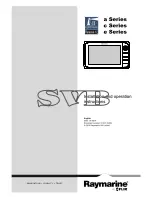
NEAX2400 IPX Feature Programming Manual
NDA-24297, Issue 1
Page 187
Centralized Attendant Service (CAS)
C-20
C-20
Centralized Attendant Service (CAS)
General Description
For applications requiring multiple sites, but having common interests or operation, the NEAX2400 IPX can operate
in a Main (attended) or Satellite (unattended) configuration. Typically, incoming calls to the satellite are routed to
the main location for processing by the Central Attendant(s) within the CAS network. This service feature can be
used to improve overall communication efficiency.
Operating Procedure
Listed Directory Number (LDN) Call
1.
Upon arrival of an LDN call at a satellite system, the LDN call is automatically directed to the main system
via a release link trunk.
2.
Upon receiving the incoming CAS call, the ATTENDANT CONSOLE(s) [A-3] will display the incoming
CAS call by flashing the CAS lamp.
3.
The Attendant answers the incoming CAS call by pressing the CAS or ANSWER key; hears the Incoming
Call Tone (480 Hz - 440 Hz - 480 Hz) for 300 msec.
4.
The Attendant presses SHF, causing a switch hook flash; hears special dial tone from the satellite system.
5.
The Attendant dials the required telephone number in the satellite system.
6.
Upon hearing ringback tone, the Attendant presses the RELEASE key to make the release link trunk
available to serve another call.
Recall on Don't Answer Call
1.
A satellite system is arranged to re-establish a connection from a calling party via a release link trunk to
an Attendant in the main system, if the called station does not answer within a prefixed time.
2.
Upon receiving the recall on a No Answer Call, the ATTENDANT CONSOLE(s) [A-3] will display the
incoming CAS call by flashing the CAS lamp.
3.
The Attendant answers the incoming CAS call by pressing the CAS or ANSWER key; hears continuous
ringback tone (440Hz - 480 Hz) for 300 msec.
4.
After hearing the burst of continuous ringback tone, the Attendant and the calling party converse over
ringback tone because of ringing the called station continuously during recall connection.
5.
If the calling party desires to hold the connection, the Attendant presses the RELEASE key to make the
release link trunk available to serve another call.
Camp-on
1.
If the Attendant directs the satellite system to connect a call to a busy station, the satellite system transmits
a Camp-On confirmation tone (100 msec burst of 440 Hz) to the Attendant, also a Camp-On Indication
Tone (200 msec burst of 480 Hz) to the called station, and reconnects the calling party to the Attendant.
2.
If the calling party desires to wait, the Attendant presses the RELEASE key to make the release link trunk
available to serve another call.
3.
If the Camped-On station remains busy for longer than the prefixed time, the satellite system reconnects
the calling party via a release link trunk.
4.
Upon receiving the recall on a Camped-On call, the ATTENDANT CONSOLE(s) [A-3] will display the
incoming CAS call by flashing the CAS lamp.
5.
The Attendant answers the incoming CAS call by pressing the CAS or ANSWER key; hears the Camp-
On Identification Tone (100 msec burst of 440 Hz).
6.
When the Camped-On station becomes idle, the satellite system rings the camped-on station.
















































